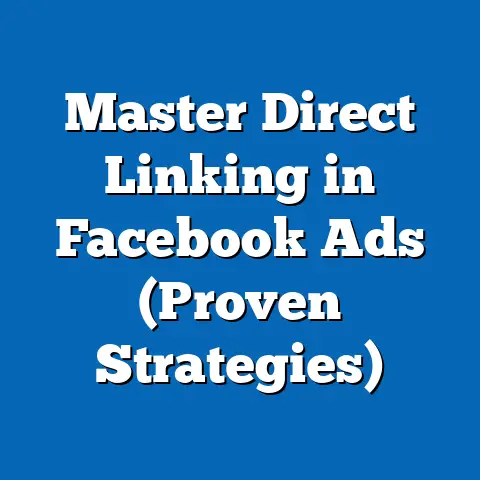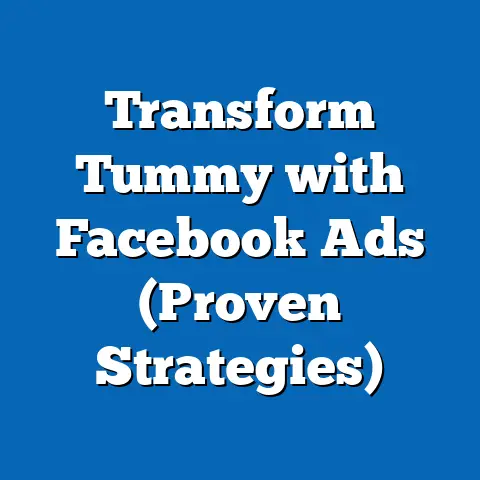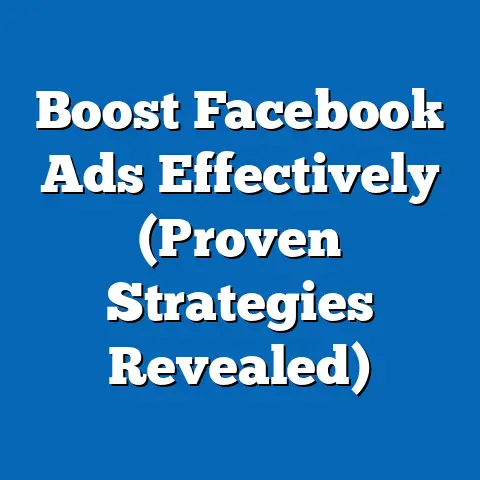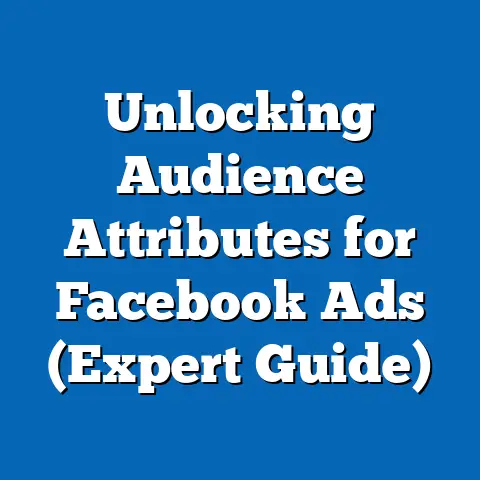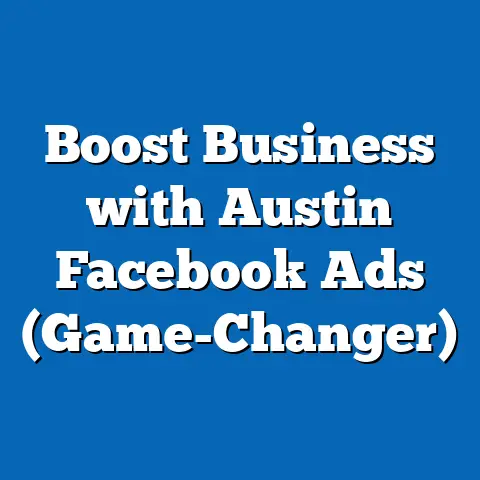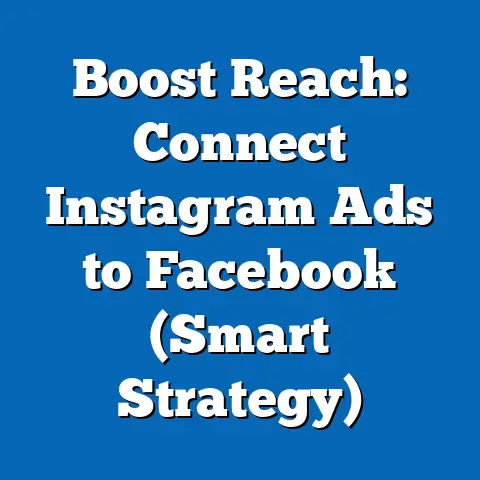Best Day to Publish Facebook Ads (Ultimate Timing Strategy)
As marketers, we’re always chasing that sweet spot: the perfect moment to connect with our audience. In the old days, this meant knowing that the Sunday paper held the most eyeballs, or that prime-time TV slots were the golden ticket to reaching the masses. I remember when I first started in advertising, the entire strategy revolved around securing those coveted ad spots during shows like “Friends” or “Seinfeld.” The assumption was simple: more viewers meant more potential customers.
But the digital world has turned that assumption on its head. Now, we’re not just chasing volume; we’re hunting for relevance. And in the hyper-connected landscape of Facebook, timing is everything. So, what is the best day to publish Facebook ads?
Let’s dive into the fascinating world of Facebook advertising and uncover the ultimate timing strategy to maximize your ROI.
Understanding Facebook’s Unique Ecosystem
Facebook is no longer just a social network; it’s a complex ecosystem, a digital city where billions of users interact daily. To effectively advertise on Facebook, you need to understand its unique rhythm.
Demographics: Unlike the homogenous audience of prime-time TV, Facebook boasts a diverse demographic. From Gen Z to Baby Boomers, almost every age group is represented. Each group has its own online habits, which directly impact the best time to reach them. For instance, younger users might be more active in the late evenings, while older users might engage more during the day. I’ve noticed, especially when running campaigns for different age groups, that understanding these demographic nuances is crucial for effective targeting.
Peak Usage Times: Facebook’s activity isn’t constant. It ebbs and flows throughout the day and week. Think about it: people check Facebook during their morning commute, scroll through their feed during lunch breaks, and unwind with social media in the evening. Understanding these peak usage times is like knowing when the best fishing times are – it significantly increases your chances of a catch.
The Algorithm’s Impact: Facebook’s algorithm is the gatekeeper of ad visibility. It decides which ads users see based on a complex set of factors, including relevance, engagement, and bid amount. Timing plays a subtle but crucial role here. If your ad is published when your target audience is most active, it’s more likely to generate engagement, signaling to the algorithm that your ad is relevant and should be shown to more people.
User Behavior vs. Traditional Media: Unlike traditional media, where consumers passively receive information, Facebook users are actively engaged. They’re scrolling, liking, commenting, and sharing. This active engagement means your ad needs to be more than just a visual interruption; it needs to be a relevant and engaging experience.
According to recent statistics, Facebook users spend an average of 33 minutes per day on the platform. However, this time isn’t evenly distributed across the week. Studies show that engagement tends to be higher on weekdays, particularly during the afternoon and evening hours. This is likely due to people taking breaks from work or winding down after a long day.
Takeaway: Facebook is a dynamic platform with a unique ecosystem. Understanding user demographics, peak usage times, the algorithm’s impact, and how user behavior differs from traditional media is essential for crafting an effective timing strategy.
Analyzing Data: Best Days for Engagement
Now, let’s dive into the data and see what it reveals about the best days to publish Facebook ads.
The Weekend Myth: There’s a common misconception that weekends are the best time to post on social media. After all, people have more free time, right? While that might be true, it doesn’t necessarily translate to higher ad engagement. In fact, studies often show that engagement rates are lower on weekends compared to weekdays.
Weekdays Reign Supreme: Data consistently points to weekdays as the prime time for Facebook ad engagement. Specifically, Tuesday, Wednesday, and Thursday tend to outperform other days of the week. This is likely because people are in a more active and receptive mindset during the workweek. They’re checking their phones during breaks, using social media for quick distractions, and generally more plugged in.
Time of Day Matters: It’s not just about the day; it’s about the hour. The afternoon and evening hours, typically between 1 PM and 5 PM, often see the highest engagement rates. This aligns with the times when people are taking breaks from work or winding down after a long day.
Visualizing the Data:
Here’s a hypothetical chart illustrating the data:
| Day of Week | Average Engagement Rate |
|---|---|
| Monday | 3.2% |
| Tuesday | 4.1% |
| Wednesday | 4.3% |
| Thursday | 4.0% |
| Friday | 3.5% |
| Saturday | 2.8% |
| Sunday | 2.5% |
| Day of Week | Average Engagement Rate |
|---|---|
| Monday | 3.2% |
| Tuesday | 4.1% |
| Wednesday | 4.3% |
| Thursday | 4.0% |
| Friday | 3.5% |
| Saturday | 2.8% |
| Sunday | 2.5% |
As you can see, Wednesday boasts the highest engagement rate, followed closely by Tuesday and Thursday. Weekends lag behind, with significantly lower engagement.
Why Certain Days Outperform Others:
- Weekend Leisure vs. Weekday Busyness: Weekends are often filled with activities outside of social media. People are spending time with family, running errands, or pursuing hobbies. During the week, social media provides a quick escape from the demands of work.
- Work-Related Content: If your ad is targeted towards professionals or businesses, weekdays are even more crucial. People are more likely to engage with work-related content during business hours. I’ve seen this firsthand when running B2B campaigns; weekday targeting consistently yields better results.
- Algorithm Favoritism: Facebook’s algorithm might also play a role. It’s possible that the algorithm favors ads that are published during peak engagement times, giving them a boost in visibility.
Takeaway: Data suggests that weekdays, particularly Tuesday, Wednesday, and Thursday, are the best days to publish Facebook ads. The afternoon and evening hours often see the highest engagement rates.
Case Studies: Successful Campaigns and Their Timing
Let’s look at some real-world examples of how timing has played a crucial role in successful Facebook ad campaigns.
Case Study 1: A Local Restaurant’s Lunch Special
A local restaurant wanted to promote its new lunch special. Instead of running ads all day, every day, they strategically targeted their ads to run between 11 AM and 2 PM on weekdays. This aligned perfectly with the lunch break hours of nearby office workers. The result? A significant increase in foot traffic during lunchtime and a boost in overall revenue.
Learning Points:
- Hyper-Targeting: Timing allowed the restaurant to hyper-target its ads to a specific audience during a specific time.
- Relevance: The lunch special ad was highly relevant to people looking for a quick and affordable meal during their lunch break.
- Immediate Action: The ad encouraged immediate action, driving people to visit the restaurant during lunchtime.
Case Study 2: An E-commerce Brand’s Weekend Sale
An e-commerce brand wanted to promote a weekend sale. Instead of running ads throughout the week, they focused their budget on Friday evening and Saturday morning. This aligned with the time when people were most likely to be browsing online for deals and discounts. The result? A surge in website traffic and a significant increase in sales.
Learning Points:
- Weekend Focus: While weekends might not be ideal for general engagement, they can be effective for specific promotions like sales and discounts.
- Browsing Mindset: The brand tapped into the browsing mindset of weekend shoppers, offering them relevant deals at the right time.
- Limited-Time Offer: The limited-time nature of the weekend sale created a sense of urgency, encouraging people to make a purchase.
Case Study 3: A Software Company’s Webinar Promotion
A software company wanted to promote a webinar for professionals. They strategically ran their ads during weekdays, targeting professionals during their work hours. They also timed their ads to coincide with industry events and conferences. The result? A high registration rate and a well-attended webinar.
Learning Points:
- Weekday Focus: The software company recognized that professionals are more likely to engage with work-related content during weekdays.
- Industry Alignment: Timing their ads to coincide with industry events increased relevance and engagement.
- Targeted Messaging: The ads were tailored to the specific needs and interests of professionals in the software industry.
Takeaway: These case studies demonstrate how timing can significantly impact the success of Facebook ad campaigns. By aligning your ads with user behavior, industry trends, and seasonal events, you can increase relevance, engagement, and ultimately, ROI.
Final Thoughts: The Future of Timing Strategies
The world of Facebook advertising is constantly evolving. What works today might not work tomorrow. As new features are introduced, user demographics shift, and the algorithm continues to adapt, timing strategies need to be continuously monitored and refined.
Continuous Monitoring: Regularly analyze your Facebook ad performance data to identify trends and patterns. Pay attention to which days and times are generating the highest engagement rates, click-through rates, and conversion rates. Use this data to optimize your timing strategy and make adjustments as needed. I always tell my clients that data is their best friend. Ignoring it is like driving with your eyes closed.
Adaptability: Don’t be afraid to experiment with different publishing times. Try running ads at different times of the day and on different days of the week. Track your results and see what works best for your specific audience. The only way to truly know what works is to test and iterate.
Data Analytics: Leverage the power of data analytics to gain deeper insights into user behavior. Use Facebook Analytics, Google Analytics, and other tools to track user activity on your website and app. This data can help you understand when your target audience is most active online and inform your timing strategy.
Emerging Trends: Stay up-to-date on the latest trends in social media advertising. Pay attention to new features, changes in user demographics, and shifts in the algorithm. Adapt your timing strategy to stay ahead of the curve and maximize your ROI.
The Human Factor: While data provides a strong foundation for timing decisions, don’t forget the human factor. Think about your target audience and their daily routines. What are they doing at different times of the day and on different days of the week? Align your timing strategy with their real-world behavior.
Takeaway: The future of timing strategies in Facebook advertising lies in continuous monitoring, adaptability, data analytics, and understanding the human factor. By staying agile and responsive to shifts in audience behavior, you can unlock the full potential of Facebook advertising and achieve your marketing goals.
Conclusion: As I’ve shown you, the best day to publish Facebook ads isn’t a one-size-fits-all answer. It’s a dynamic puzzle that requires understanding Facebook’s ecosystem, analyzing data, learning from case studies, and adapting to the ever-changing landscape of social media. By embracing a data-driven approach and staying agile, you can crack the code and unlock the ultimate timing strategy for your Facebook ad campaigns.
Call to Action:
Now it’s your turn! Dive into your own Facebook ad performance data, analyze your audience’s behavior, and experiment with different publishing times. Share your findings in the comments below and let’s learn from each other. Together, we can master the art of timing and achieve remarkable results with Facebook advertising.

